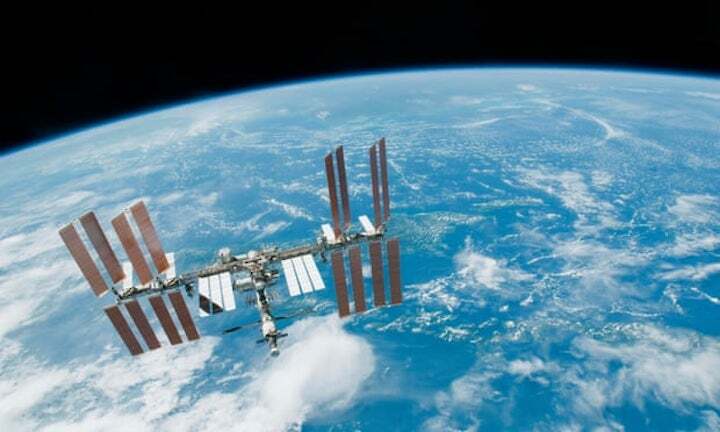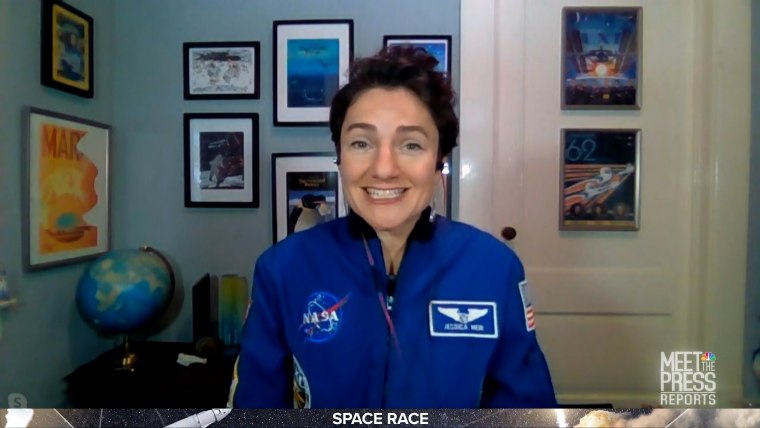4.02.2022
Nasa confirmed the ISS will plunge into the Pacific ocean to join other decommissioned space stations, satellites and space debris

The International Space Station (ISS) will continue its operations until 2030 before heading for a watery grave at the most remote point in the Pacific, Nasa confirmed in a new transition plan this week.
More than 30 years after its 1998 launch, the ISS will be “de-orbited” in January 2031, according to the space agency’s budget estimates. Once out of orbit the space station will make a dramatic descent before splash-landing in Point Nemo, which is about 2,700km from any land and has become known as the space cemetery, a final resting place for decommissioned space stations, old satellites and other human space debris.
Also known as the “Oceanic Pole of Inaccessibility” or the “South Pacific Ocean Uninhabited Area”, the region around the space cemetery is known for its utter lack of human activity. It’s “pretty much the farthest place from any human civilization you can find”, as Nasa put it.
Nasa said it plans to continue future space research by buying space and time for astronaut scientists on commercial spacecraft.
While celebrating the ISS’s record of scientific accomplishments, Robyn Gatens, the director of the International Space Station at Nasa headquarters, also emphasized in a statement that its current goal was to “lay the groundwork for a commercial future in low-Earth orbit”.
“We look forward to sharing our lessons learned and operations experience with the private sector to help them develop safe, reliable and cost-effective destinations in space,” said Phil McAlister, the director of commercial space at Nasa headquarters, said in a statement.
Nasa estimated that transitioning its space research from a dedicated space station to renting space aboard commercial space ventures would save $1.3bn in 2031 alone, and that the savings could “be applied to Nasa’s deep space exploration initiatives, allowing the agency to explore further and faster into deep space”.
The ISS, about the size of an American football field, orbits the Earth about once every 90 minutes, and has been continuously occupied by astronauts since November 2000.
In September, a Russian official warned that small cracks had been discovered on the space station that could worsen over time and raised concerns about ageing equipment and the risk of “irreparable failures”, BBC News reported.
The space station was originally intended to operate for just 15 years, but Nasa said in a report that “there is high confidence that ISS life can be further extended through 2030”, though some analyses of its viability are still being conducted.
ISS was “examining the recent technical issues aboard the Russian segment”, Nasa said in its report.
Since 1971, nearly 300 different chunks of space debris, including at least five space stations, have been sunk at Point Nemo, most of them American or Russian in origin, according to a law review article about the space cemetery’s environmental impact.
The space station’s end is likely to be fiery. The “downfall” of Mir, the Russian space station, happened in March 2001, when a cargo ship fired its engines to push the space station out of orbit and send it plummeting towards Earth. While solar panels and other peripheral pieces of the space station broke off during its fall, about 20 to 25 tons of remnants fell together, resulting in sonic booms, according to Nasa’s documentation.
Quelle: The Guardian
+++
Crashing Nemo: NASA plans watery end for space station in 2031
Like the Mir and Skylab missions that came before it, the International Space Station will meet a watery end when it is finally retired from service.
In a report released Monday, NASA detailed how the agency will keep the International Space Station running through the end of this decade, before decommissioning it in 2031 by intentionally crashing the orbiting outpost into the southern Pacific Ocean.
NASA plans to aim for a region known as Point Nemo in the so-called South Pacific Ocean Uninhabited Area, an open stretch of water east of New Zealand. This remote part of the Pacific Ocean is sometimes nicknamed the "Spacecraft Cemetery," because it's a frequent target for space agencies and aerospace firms to intentionally de-orbit old or defunct spacecraft.
Controlled de-orbits are a crucial way to remove decommissioned space stations and satellites from low-Earth orbit, rather than letting them languish in space.
Most objects will burn up as they pass through Earth's atmosphere, but some fragments can survive. With its location far away from any landmasses, the area is considered a relatively safe place for falling space debris.
Construction began on the International Space Station in 1998 and completed in 2011. The project, designed to function as a science lab in low-Earth orbit, is a collaboration between NASA, the European Space Agency, Russia’s Roscosmos space program, the Canadian Space Agency and the Japan Aerospace Exploration Agency.
In its remaining years, NASA said it plans to continue conducting research aboard the ISS while also using the lab to support deep-space exploration. In its report, the agency said it will bolster commercial ventures to develop new destinations in low-Earth orbit.
"We look forward to sharing our lessons learned and operations experience with the private sector to help them develop safe, reliable, and cost-effective destinations in space," Phil McAlister, director of commercial space at NASA headquarters, said in a statement.
Quelle: NBC News

